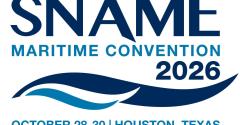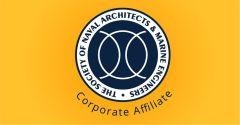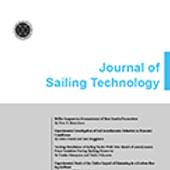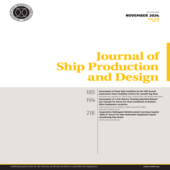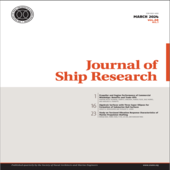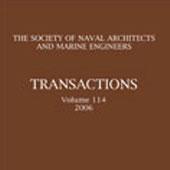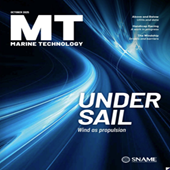(mt) July 2020: Australia and the Antarctic, authored by Nick Browne
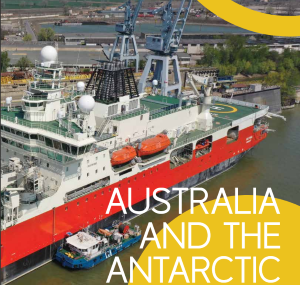 RSV Aurora Australis has been the lifeline to Australia’s Antarctic and sub-Antarctic research stations and the central platform of our Antarctic and Southern Ocean scientific research for the last 30 years. As she sailed up the River Derwent in Hobart, Tasmania in March 2020, she concluded her final voyage for Australia’s Antarctic Program, led by the Australian Antarctic Division—another successful resupply of Australia’s sub-Antarctic research station at Macquarie Island completed.
RSV Aurora Australis has been the lifeline to Australia’s Antarctic and sub-Antarctic research stations and the central platform of our Antarctic and Southern Ocean scientific research for the last 30 years. As she sailed up the River Derwent in Hobart, Tasmania in March 2020, she concluded her final voyage for Australia’s Antarctic Program, led by the Australian Antarctic Division—another successful resupply of Australia’s sub-Antarctic research station at Macquarie Island completed.
Australia has a long and proud history of shipping support in its Antarctic program, dating back to the early Australian National Antarctic Research Expeditions in 1947. This has included more than three decades of support from the Danish Lauritzen Line “Dan” ships (most famously Nella Dan) and other ice-strengthened cargo vessels including Ice Bird and Polar Bird.
Aurora Australis, affectionately known to those that sailed on her as the “Orange Roughy,” was introduced in 1990 as a secondary shipping capability to support these ice-strengthened cargo ships, by providing an enhanced icebreaking capability and to intro-duce a platform with dedicated scientific research capabilities. Since launching at Carrington Slipways in Newcastle, Australia, in September 1989, she has completed more than 150 voyages and transported more than 14,000 expeditioners and scientists.
In September 2018, the floating ceremony for Australia’s new Antarctic vessel, RSV Nuyina, took place at Damen Shipyards Galati in Romania. At 160 m in length, Nuyina is a substantially larger vessel than her predecessor, which is 95 m.
The shipyard and concept designer Knud E. Hansen were part of a broader collection of Damen Shipyards Group entities that combined under the management of Damen Schelde Naval Shipbuilding (Damen) for the design, construction, testing, and acceptance of the new vessel. Damen partnered with Serco Defence, which is the over-all prime contractor to the Australian government, for the delivery and subsequent long-term operation and maintenance of Nuyina.
Triathlete
Nuyina has been described as the triathlete of vessels: a scientific research platform, a highly capable icebreaker, and resupply vessel, all in one. When she enters service in support of Australia’s Antarctic Program, Nuyina will represent a scientific research capability that is equal to, if not greater than, any other research vessel operating in the Southern hemisphere. She also will be the most capable multipurpose vessel operated by national Antarctic programs in terms of icebreaking, and have a cargo carrying capability three times the capacity of her predecessor.
This is coupled with her ability to support ship to shore cargo operations over water, using two ship-supported lift-on roll-off landing barges, able to transfer up to 45 tons cargo deadweight ashore, and the ability to land and support two medium-size helicopters or four light-size helicopters. Helicopter cargo operations can be supported from both the dedicated helicopter landing deck or from a winch only position from the forward cargo hold hatch cover.
The contracted basis for the design of Nuyina consisted of an operational description and a function and performance specification. These documents formed part of the procurement process and were therefore central to the early development of the concept design and the subsequent contracted design solution. The con-tract also included a formal design review process, which included specific obligations to address a requirements review, functional design reviews, and detailed design reviews. Each of these reviews had its own defined entry criteria, objectives, and exit criteria.
Blue water vs. polar research vessels
The design of a research vessel is typically dictated by a number of common design outcomes. Some of these include:
• a flexible platform—the need to have a platform that is able to be adapted continually and re-configured to address changing science priorities over the service life of the vessel
• low noise—the need to provide a propulsion system and machinery arrangements that minimize the level of underwater acoustic noise radiated away from the vessel and the level of self-noise transmitted through the vessel
• deployment systems—the need to incorporate a wide variety of deployment systems from various vessel locations that are capable of collecting data and samples down to the ocean floor
• integration of sensors—the need to have a vast array of sensitive instruments and sensors looking upward, outward, and down-ward, that are integrated in a way that minimizes disturbances created by the presence of the vessel itself
• conducting of research—the need to have laboratories and other research facilities onboard to enable processing and analysis to be conducted using the samples and data that are collected
• storage of samples and data—the need to be able to preserve and store the highly valuable (and costly) data and samples collected, to be returned ashore for further research, analysis, and storage.
The means by which some of these outcomes are achieved in the design of a multipurpose icebreaking vessel require unique solutions and design features to be implemented, in comparison to blue water research vessels. This takes into account the fact that many typical research vessel design features are not practical for operating in the polar environment.
Hull design
The hull form of Nuyina can be characterized as having an ice-breaking type bow and stern shape that have been integrated into an overall hull with dimensions that result in a higher L/B ratio than typical escort icebreakers. The major challenge for the design of Nuyina’s hull form was to accommodate competing requirements associated with open water versus icebreaking performance, providing sufficient volume for internal cargo carriage, while balancing all of this with the need to offer good performance in relation to bubble sweep-down and hull-propeller interactions. The overall hull form and design of the appendages (including forward and aft skeg, rudder head boxes, and integral shaft gondolas/brackets) was influenced through an optimization process conducted by Damen in conjunction with subject matter experts at HSVA in Hamburg Germany. Following pre-liminary scale model testing to validate overall performance as part of its technical risk reduction, Damen conducted an optimization process for fairing the hull lines that commenced with numerical analyses to investigate: hull pressure distribution and wave pattern; propeller wake field; prediction of cavitation inception speed; open water and icebreaking performance pre-dictions; and prediction of bubble sweep-down behavior.
The optimized hull form resulted in a small decrease in open water powering performance, but enabled a significant improvement in icebreaking performance; the bubble-sweep down behavior (including the flow characteristics around the large multi-beam bathymetric echo-sounder); and the propeller wake field/cavitation performance. Even in these relatively early stages of design and basic engineering, it became apparent that com-promises would be required to achieve the best overall design outcome for Nuyina. The final optimized hull form was validated through an extensive regime of physical scale model tests at HSVA.
Members! To continuing reading this article online, please click here and flip to page 35.
Not a Member? No problem! For instant access, please SUBSCRIBE here, or JOIN here!


